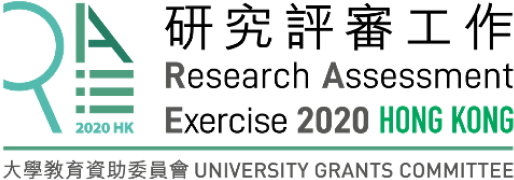Research categories:
?Engineering
Engineering, Environmental (4)
Engineering, Civil (2)
Construction & Building Technology (1)
Environment/Ecology
Environmental Sciences (4)
Green & Sustainable Science & Technology (2)
Environmental Studies (1)
Impact locations:
?Asia
United Arab Emirates (1), Thailand (1), Taiwan, China (1), China (Mainland China) (1), Hong Kong, China (1)
Case Study
A Comprehensive Carbon Labelling Scheme for Identifying Low Emission-Intensive Construction Materials
1. Summary of the impact
At least one-quarter of the carbon emissions in a building’s lifecycle are embedded in the construction materials. To select the lowest-carbon building materials, a novel scheme has been developed to assess the carbon footprint of the materials based on the specific manufacturing processes and local energy sources used. The scheme has been adopted by HK’s Construction Industry Council (CIC) for its Carbon Labelling Scheme. To date, over 70 overseas and local construction products have been awarded carbon labels, with the scheme being adaptable for world-wide application. Local building environmental assessment schemes now award bonus credits to buildings using carbon labelled products.
2. Underpinning research
Prof Thomas Ng and his colleagues in the Department of Civil Engineering (CivE) Centre for Innovation in Construction and Infrastructure Development lead an international research team, first commissioned by CIC in 2010, to develop a novel carbon assessment and labelling framework for emission-intensive construction products. The other key team members include: Prof Geoffrey Hammond, University of Bath; Prof Chimay Anumba, Pennsylvania State University; Prof Irene Lo and Prof Jack Cheng, Hong Kong University of Science and Technology; Dr Bruce Chong, Arup; etc.
The team has conducted extensive lifecycle assessments of materials used in the construction industry in HK (3.1). By examining the quantities of materials used and applying the emission factors found in reliable carbon inventories, it was found that concrete, reinforcing bars, galvanised steel, ceramic tiles, aluminium, etc. had significant environmental impacts in a typical high-rise building (3.2).
To understand the manufacturing processes and possible emission sources, the research team visited many factories producing the 16 highest emission-intensive construction products. Data were collected from the factories and verified against peer reviewed data wherever possible. It was found that CO2 was emitted during: (i) the upstream raw material extraction process; (ii) the core manufacturing process in the factory; and (iii) the downstream transportation process (3.3). Process maps were prepared for, and verified by, the companies. The direct and indirect emissions relating to the production of specific construction products were then identified and analysed to determine the total embedded carbon footprint for each process.
For example, in the production of cement, the direct emissions included those released from the calcination of carbonates and other raw materials. CO2 from calcination was calculated based on the volume of clinker produced. The emission factor per tonne of clinker was determined according to the measured CaO and MgO contents of clinker, and corrected for the relevant quantities of CaO and MgO in the clinker stem from non-carbonate sources. The combustion of kiln fuels and non-kiln fuels was also factored into the assessment. As for the indirect emissions, CO2 emissions included the external electricity consumption, production of purchased clinker, and third-party transportation (3.4).
Based on the emission sources identified, carbon assessment frameworks were designed by the team for the 16 key selected construction products. For example, for conventional kiln fuel in the cement production process, the parameters assessed included: (i) fuel consumption (tonnes); (ii) lower heating value (GJ/t fuel); and (iii) emission factor (tCO2e/GJ fuel). Since extensive information needed to be captured and reported by manufacturers to facilitate the carbon footprint assessment, standardised templates and quantification tools were developed and presented in Excel spreadsheet format (3.5). Assessment guidelines were also produced by the team to help product manufacturers in accurately identifying and collecting the data needed for the carbon footprint assessment.
To determine the carbon rating of these specific products, benchmarks were needed to reflect the various and differing production technologies and fuel mixes. Through research surveys, expert perceptions on the emission ranges were identified and fuzzy set theory was used to categorise the range of different carbon ratings (3.6). The results derived from fuzzy set theory and the data acquired from factory surveys etc. were integrated into a comprehensive scheme, which has now been adopted by CIC to determine the labelling grades awarded for the specific construction products.
3. References to the research
[3.1] Dong, Y.H. & Ng, S.T. (2014) Comparing the midpoint and endpoint approaches based on ReCiPe – a study of commercial buildings in Hong Kong, International Journal of Life Cycle Assessment, 19(7), 1409-1423.
[3.2] Ng, S.T., Chan, J.H.L. Chan, G.K.C. & Zou, J.W.W. (2017) Environmental impacts of construction material production, Proceedings of the Institution of Civil Engineers – Engineering Sustainability, 170(3), 169-184.
[3.3] Dong, Y.H., Ng, S.T., Kwan, A.H.K. & Wu, S.K. (2015) Substituting local data for overseas life cycle inventories – a case study of concrete products in Hong Kong, Journal of Cleaner Production, 87, 414-422.
[3.4] Zhang, J.L., Cheng, J.C.P. & Lo, I.M.C. (2014) Life cycle carbon footprint measurement of Portland cement and ready mix concrete for a city with local scarcity of resources like Hong Kong, The International Journal of Life Cycle Assessment, 19(4), 745-757.
[3.5] Dong, Y.H. & Ng, S.T. (2015) A life cycle assessment model for evaluating the environmental impacts of building construction in Hong Kong, Building and Environment, 89, 183-191.
[3.6] Chen, Y., Ng, S.T. & Hossain, M.U. (2019) Approach to establish carbon emission benchmarking for construction materials, Carbon Management, 9(6), 587-604.
4. Details of the impact
The carbon assessment scheme developed by Prof Ng and his team was adopted in 2014 by HK’s CIC for its Carbon Labelling Scheme for Construction Products. The Scheme has since been taken up by the construction industry and is referred to in guidelines issued by the government and the HK-based Building Environmental Assessment Method (BEAM), under its certification requirements ( https://www.beamsociety.org.hk/en_index.php ).
To date, the CIC has developed comprehensive assessment guidelines and tools for three carbon-intensive construction products, including: ready-mixed concrete, structural steel and reinforcing bars (5.1). Over 70 construction products have been certified, including those from HK, mainland China, Taiwan, Thailand and United Arab Emirates (5.2). According to the CIC, “The majority of the certified construction products have been awarded the carbon label at the “Outstanding” and “Highly Commended” grades, indicating that product manufacturers have been endeavouring to re-engineer the production of ready-mixed concrete and steel products for carbon reduction” (5.3).
The Scheme has also resulted in a new career path in HK, namely the Certified Carbon Auditor, whose roles include auditing the submitted carbon footprint information from manufacturers and determining the carbon label rating for the specific construction products. More than 30 Certified Carbon Auditors are now practising in HK and they are responsible for conducting the verification process under the CIC Scheme.
The Director of Industry Development of the CIC, Richard Pang, recently said that: “The work of the Department of Civil Engineering is high appreciated. With the Scheme, CIC has been able to promote low carbon construction and sustainability in Hong Kong and beyond” (5.3). The former Director of CIC’s Zero Carbon Building, Guiyi Li, shared with members of the Hong Kong Institution of Engineers at an interview that the Scheme can: “promote low-carbon construction, stimulate demand for low-carbon construction materials, facilitate decisions and allow companies to track their carbon footprint” (5.4).
An example of the impact of the Scheme is labelled ‘C40 concrete products’, where these products release 0.24 tCO2e/t, as compared to the baseline of 0.35 tCO2e/t, i.e. a 31% reduction in the carbon footprint. With concrete consumption of 5,751,000 m3 in HK in 2017, the use of labelled concrete products has given the industry the capacity to reduce CO2 emissions by 1.5 million tonnes per annum.
Gammon Concrete Technology (GCT) ( https://www.gammonconstruction.com/en/index.php ), one of the biggest ready-mixed concrete producers in HK, has already had 15% of its ready-mixed concrete products accredited under the Scheme (5.5). The General Manager of GCT, Herbert Zheng, acknowledged that the labelled products enable GCT to: “secure market advantages, including clients’ recognition, product design optimisation, and productivity improvement” (5.5).
In addition to industry adoption, HK government is encouraging the use of the Scheme. The Environmental Bureau stated in Hong Kong’s Climate Action Plan 2030+ that the Scheme can: “provide verifiable and accurate information on the carbon footprint of construction products for the building design and construction sector” (5.6). The Environmental Protection Department’s Green Procurement website highlights that: “the Government introduces measures to promote low carbon construction, carbon reduction and the use of recycled materials in public works projects” (5.7), with the Scheme being referenced showing its recognition in the Government’s green procurement strategy.
The Housing Department, which has a capital budget of HK$2.2 billion for 2019-20, referenced the Scheme in their Sustainability Report 2016/17 and indicated that they “explored the integration of CIC Carbon Labelling Scheme and our product certification scheme” and “will prepare and implement new specification clauses for their coordinated implementation” (5.8). While a typical 40-storey public housing block consumes 20,460 m3 of concrete, a reduction of 5,416 tonnes of CO2 can be achieved by specifying the use of labelled concrete products.
Significantly, the Scheme has gained recognition under BEAM certification, through which private developments can earn points leading to the granting of gross floor area concessions. To encourage greater adoption of low-carbon construction materials, BEAM Plus New Buildings V2.0 (NB V2.0), unveiled in September 2019, awards bonus credits for projects that have “at least 5% of certified green products under the CIC Carbon Labelling Scheme” (5.9), and 3 new buildings have been accredited with provisional platinum. With 148 buildings having sought BEAM Plus certification in 2019, NB V2.0 will lead to radical changes towards the use of labelled construction products. BEAM Plus Existing Buildings V2.0 (EB V2.0), released in March 2016, also awards extra credits for using green products including those certified by the Scheme (5.9). To date, 83 existing buildings have been accredited under EB V2.0.
The General Manager of the BEAM Society, Chi-Sing Ho, noted: “the CIC Carbon Labelling Scheme is making it easier for builders and their clients to select green products and thus help us achieve our overall goal of reducing the environmental impacts of building construction” (5.10).
5. Sources to corroborate the impact
[5.1] Assessment guides and quantification tools under the CIC Carbon Labelling Scheme
[5.2] Labelled construction products and certified carbon auditors under the CIC Carbon Labelling Scheme
- Labelled construction products
- Certified carbon auditors
[5.3] Letter from the Construction Industry Council
[5.4] Interview conducted by Hong Kong Institution of Engineers regarding the Scheme
[5.5] Letter from Gammon Concrete Technology
[5.6] Quotation in Environmental Bureau’s Hong Kong’s Climate Action Plan 2030+
- https://www.enb.gov.hk/sites/default/files/pdf/ClimateActionPlanEng.pdf
- Refer to page 35 of the report
[5.7] Quotation in Environmental Protection Department’s Green Procurement
[5.8] Quotation in Housing Department’s Sustainability Report 2016/17
- https://www.housingauthority.gov.hk/mini-site/hasr1617/en/common/view.html?f=5
- Refer to page 3 of the report under the heading of “Environmental Performance”
[5.9] Quotation the BEAM Plus certification for the use of materials certified under the CIC Carbon Labelling Scheme
- BEAM Plus New Buildings Version 2.0
- https://www.beamsociety.org.hk/files/download/NBv2.0_FinalVersion_v2.2_20190904.pdf
- Refer to page 23 of the guideline
- BEAM Plus Existing Buildings (Comprehensive Scheme) Version 2.0
- https://www.beamsociety.org.hk/files/download/BEAM%20Plus%20Existing%20Buildings%20v2_0_Comprehensive%20Scheme.pdf
- Refer to pages 89-90 of the guideline
- BEAM Plus Existing Buildings (Selective Scheme) Version 2.0
- https://www.beamsociety.org.hk/files/download/download-20160331154515.pdf
- Refer to page 99 of the guideline
[5.10] Letter from the BEAM Society

